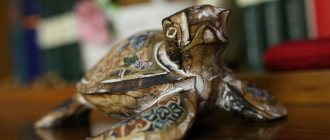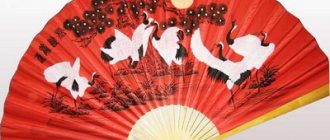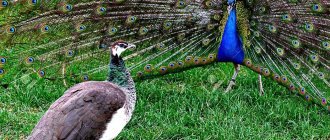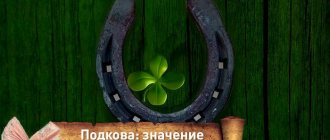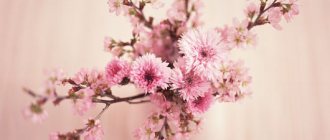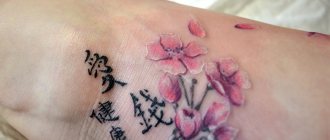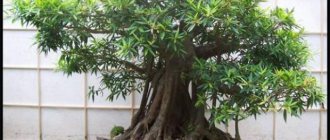In China, the unicorn is revered on a par with the dragon. It is not uncommon for a unicorn to be included among the four most noble animals. It is believed that the dragon protects people from the sky, and the unicorn from the earth.
According to legend, the unicorn has a scaly skin, horse hooves, a dragon's head and deer antlers. But, despite its somewhat frightening appearance, this animal is very kind
.
The unicorn feeds only on cereals of cultivated plants
. The lifespan of this animal is almost like that of a turtle - 2 thousand years.
The Chinese believe that the unicorn has a sacred power with which it brings good to people. The unicorn also symbolizes a ray of sunshine, purity and unity.
.
And its horn in the form of a spiral indicates that it will be unchangeable in time. In addition, the unicorn is a symbol of transmutation, knowledge and freedom
. He will definitely tell the right path to those who want to find the truth.
Unicorn as a symbol, which means - a symbol of purity and light.
The unicorn is mentioned in the Old Testament as the beast of reem, a biblical metaphor for strength. However, modern translations of the holy book most often say directly - “Unicorn”. Reem is not only strong, but also wild, uncontrollable by man (Job, 39: 9; Psalms, 22: 21; 29: 6; 92: 10; numbers, 23: 22; 24: 8.
The spiral horn of a unicorn was called an alicorn. It was mentioned by the Greek historian and physician Ctesias, who said that the rulers of India were so afraid of being poisoned that they used alicorn to neutralize supposed poisons in their food.
Unicorns are immortal. They live alone, usually in the forest near a creek with clear water in which you can see a reflection, because they are a little vain and know that there are no creatures in the world as beautiful and magical. Unicorns rarely pair up, and there is no place more mysterious than where a unicorn was born.
In the ancient world, he was considered to have come from India, where he was depicted as red-headed, with a white or black horn. Then he appeared in Babylon, China, Tibet, Greece. In the West, the apogee of his fame occurred in the Middle Ages. The unicorn represents power, the force that opposes the forces of darkness, maintaining balance in the universe. It is a symbol of the sun's ray, purity, turning towards unity, towards the center. The spiral is a reminder of what remains unchanged through time. In addition, the unicorn is a symbol of transmutation, freedom and knowledge, it shows the way to those who seek the truth.
Many traditions speak of the unicorn as a mythical animal that personifies the highest power of existence. He is clothed in mystery and embodies the original unity, the beginning and final goal of human existence, the unity of opposites and the ability to overcome internal contradictions, universal love and compassion.
In Babylon he was represented as winged. On the amulet - a cylinder dating from about 1800 BC. e., on its opposite surfaces are depicted two unicorns, symbolizing the two sides of the tree of life. In the Sumero-Semitic tradition, the unicorn is a lunar symbol, an attribute of goddesses - virgins.
In ancient China, the unicorn (qilin) is interpreted as a combination of two concepts: “qi” represents the masculine aspect, yang, the driving force, the energy of creation; “Lin” is the feminine principle, yin. Thus, the qilin represents the creative impulse and its endless expansion, as well as the unity of the opposites of male and female. The unicorn is shown to people only in exceptional cases.
He is considered a messenger of happiness, his appearance symbolizes the rise to power of a good ruler or the birth of a true sage. The appearance of the qilin marked the birth and death of Confucius.
Qilin is associated with some historical moments of the Chinese tradition. So, one day, 5 thousand years ago, Emperor Fu-si was sitting on the shore near the mouth of the yellow river. Suddenly a qilin appeared, and the dirty waters of the river brightened and became crystal clear green. Qilin stopped in front of the emperor, struck the rock with his hoof three times and spoke to him in a voice that rang like a temple bell. When the qilin turned to leave, the emperor saw that his back was covered with magical marks, which he tried to copy. This is how the first written language of China appeared.
In Tibet, the unicorn is called "se-ru", it is mainly a gazelle or fallow deer that lives on mountain peaks. The unicorn is a bridge between heaven and earth, between the world of light principles and the world of dark and dense matter, manifested and unmanifested. The unicorn is a symbol of awakened consciousness, integrity and inner peace, it enlightens, shines in the darkness and, like the morning star, shows the way, inspiring people in the search for wisdom. The pediments of Himalayan monasteries invariably depict two unicorns turning the wheel of dharma.
In India, the unicorn represents the power of spiritual wealth. He is both a destroyer and a creator. The symbol of the unicorn is found in the Atharva Veda and in the Mahabharata in the myth of the flood, during which Manu tied the ship to the horn of a giant fish - a unicorn.
In Persia, the unicorn represents the fertilizing principle, strength and the ability to purify. In a Persian manuscript of the 15th century. it is said: “As for his Horn, he Appears Golden, with his Help All Corruption and Infamy Will Be Destroyed and Dispelled.”
In the Hebrew tradition, legend says that when Yahweh asked Adam to name all the animals, the unicorn was the first to receive it, and thus he was elevated to the highest rank. When Adam and Eve were expelled from Paradise, God gave the unicorn a choice: stay in Eden or go with people. The unicorn chose the latter, and was forever blessed with compassion for people.
In the Greco-Roman tradition, the unicorn is an attribute of all virgin, lunar goddesses, for example, Artemis (Diana.
In Christianity, the unicorn's horn is a symbol of divine unity, spiritual power and nobility, and therefore the unicorn becomes the image of Christ. The small stature of the unicorn is associated with the humiliation of Christ at his birth; its white color symbolizes purity, something that must be acquired by following the paths of the sons of God.
In knightly symbolism, the unicorn is associated with purity of feelings. The unicorn, accompanied by a maiden, is the personification of chastity and purity. He often represents the devoted love of a knight for a lady. The unicorn also represents the abandonment of physical love for a purer and stronger love. This is something like a charm of purity, a miraculous purification of bodily life and sexual energy, giving the knight strength and courage.
The alchemical unicorn represents the stage of purification, the white work. It means transmutation and spiritual evolution. His horn symbolizes the ability of spirit to penetrate matter.
Along with the decline of faith, the deep meaning of the unicorn symbol gradually disappears. But the mythical animal, immortalized in iconography and sacred texts, is present everywhere and is ready to reveal its message to those who are able to hear it.
The symbol of chastity is the unicorn.
Unicorn - symbolizes chastity, and also serves as an emblem of the sword. In early traditions the unicorn was depicted with the body of a bull, in later traditions with the body of a goat, and only in later legends with the body of a horse. Legend claims that he is tireless when pursued, but will obediently lie down on the ground if a virgin approaches him. In general, it is impossible to catch a unicorn, but if you do, you can only hold it with a golden bridle.
“His back was curved and his ruby eyes shone; at the withers he reached 2 meters. Just above his eyes, almost parallel to the ground, his horn grew; straight and thin. The manes and tail scattered in small curls, and the drooping black eyelashes, unnatural for albinos, cast fluffy shadows on the pink nostrils” (S. Drugal “basilisk.”
They feed on flowers, especially rosehip flowers, and honey, and drink morning dew.
They also look for small lakes in the depths of the forest in which they swim and drink from there, and the water in these lakes usually becomes very clean and has the properties of living water. In Russian "Azbukovniki" 16 - 17 centuries. The unicorn is described as a terrible and invincible beast, like a horse, all of whose strength lies in its horn. Healing properties were attributed to the unicorn's horn (according to folklore, the unicorn uses its horn to purify water poisoned by a snake. The unicorn is a creature of another world and most often foreshadows happiness.
They say horse a. Macedonian, bucephalus - unicorn.
There is also a legend that the legendary horse of Alexander the Great, Bucephalus, is a unicorn, caught in Egypt by order of Queen Cleopatra as a gift to the great king. Usually unicorns do not live in captivity and die, but Bucephalus obeyed Alexander.
The unicorn has the ability to purify water with its horn. This property is described in the Greek version of the Physiologus: the water in the lake was poisoned by a snake and became poisonous. The unicorn drew a cross on the water with its horn, and after that the animals were able to drink it. Here there is also a comparison of the unicorn with Christ, who cleanses from sin (poison) caused by the devil (snake. The unicorn was also credited with the ability to recognize poison with its horn. The horn became covered with beads of sweat when approaching the poison, or the poisonous liquid boiled when the horn was lowered into it. That is why cups and bowls made of horn or crushed horn were so popular. It was believed that the horn had miraculous powers. It supposedly cured epilepsy, fever, and other diseases, prolonged youth and strengthened potency. It is not surprising that it was expensive.
During the Renaissance, horn trade was carried out on a large scale. Even a small piece of it was worth a fortune; the entire horn was truly priceless. By 1600, there were at least 12 horns in Europe. The elephant has long been considered the enemy of the unicorn. They always got into a fight, and it usually ended with the unicorn ripping open the elephant's belly. The unicorn also had a difficult relationship with Leo. But the lion could lure the unicorn into a trap: fleeing from the chase, he rushed to the tree and at the very last moment jumped to the side, but the unicorn stuck its horn into the tree, and the lion could easily deal with it. The lion is called the king of beasts, but the unicorn can also claim this title. They said that the unicorn lived in Eden and was on Noah's ark. But some claimed that the unicorn and his female refused to set foot on the ark, and according to another legend, the male and female unicorns were so uncontrollable that Noah himself drove them away. Some sources reported that the unicorn drowned during the flood, while others, on the contrary, believed that he escaped by swimming. The unicorn left a noticeable mark in the literature and art of the Middle Ages and the Renaissance. Mentions of him are found in books, he is depicted in illustrations, paintings, tapestries, on religious objects, caskets, and medallions. The cult of the unicorn reached its peak in the 15th century. From the second half of the 16th century, interest in it waned, but in the 20th century it was revived again.
Man will never again be able to enjoy the beauty of a unicorn.
But a person will never again be able to enjoy the beauty of a unicorn, and also kill him, because unicorns have retired to their own country, to a parallel world, where no one can harm them.
Modern unicorn.
The nature conservation center of Prato (Italy) is home to a very real unicorn, discovered a few months ago in the forest. This is a male roe deer with a single horn in the middle of his forehead; in size it corresponds more or less to medieval descriptions.
The animal is alive, healthy and doing well, despite the intense interest of tourists. However, it is not so difficult for him to hide from them in a park area the size of a hectare.
There are other similar cases mentioned in history; if until recently many people indiscriminately considered them to be a hoax, now there is clear proof for skeptics: unicorns do exist.
The legend of the unicorn talisman according to feng shui
Qi Lin is the name of the Chinese unicorn, which means the unification of the masculine and feminine principles, the unification of the two Qi energies. The unicorn has a body covered with scales and a shell, instead of paws, cow hooves, and a lion's tail at the back.
In ancient times, the Chinese believed that the unicorn was one of the sons of the dragon, of which there were nine. The unicorn can distinguish between good and evil. In life, the unicorn loves solitude, so the unicorn talisman should be in one copy.
Author: Nikandrova Elena
Article protected by copyright and related rights. When using or reprinting material, an active link to the women's website inmoment.ru is required!
Unicorn - meaning of the symbol
Unicorn
The unicorn symbol is often found in everyday life - it can also be seen in various works of art, it is used in the work of musicians, artists, and writers. He can be seen on the coat of arms of Great Britain; in souvenir shops his image is present on various amulets, jewelry, and figurines. Rarely does a fantasy film go by without the appearance of a white unicorn.
The first mentions of a fairy-tale animal appeared in ancient Indian legends; it was described as a very strong fairy-tale animal, possessing a sacred status on a par with the gods of the ancient Indian pantheon. Then myths about him spread to China, Egypt and other countries. In Ancient Greece, and after it throughout Europe, at first it was widely believed that this was a real animal; even Aristotle described it as one of the species of artiodactyls.
In different countries, the symbol of the unicorn had a different essence. In China, he personified creativity and the unity of two opposites - female and male. Meeting him meant good news, the rise to power of a good emperor or the birth of an outstanding sage.
In Persia, India and Tibet it was a symbol of purification and wisdom, spiritual wealth and awakened consciousness.
In Europe, the cult of the unicorn flourished in the Middle Ages. The medieval image of the unicorn consists of three components - its representation in Christianity, knightly symbolism and its symbol in alchemy. Unicorn meaning of the symbol
In alchemy, its symbol meant spiritual evolution; the horn is described as a symbol of the penetration of spirit into matter, a symbol of the power of wizards and magicians.
In Christianity, it was a symbol of spiritual power, divine unity and nobility, and was associated with Christ himself.
Knightly symbolism represents the unicorn as an image of spiritual love, personifies purity of feelings, romantic love for the lady of the heart of a knight, through which he becomes brave and invincible.
In modern popular culture, the symbol of the unicorn is interpreted closest to the European medieval one. It personifies magic, white magic, purity and integrity of deeds and feelings.
Talisman Pomegranate and its feng shui meaning
Garnet is difficult to overestimate. This is a very juicy, tasty and aromatic fruit that people have been eating for more than five thousand years! This fruit was especially cultivated in ancient Egypt, India and Iran. People dedicated entire legends, fairy tales, parables and poems to the pomegranate. And great artists described its beauty on their canvases. Also, an amazing garnet stone was named after him, which is very reminiscent of beautiful and shiny garnet seeds. In fact, the meaning of garnet stone and garnet fruit are quite similar.
Since ancient times, people have believed that pomegranate is a symbol of love, as well as a talisman for all people who have known this deep feeling. It is also great for those involved in art, as it stimulates creative thinking. But in Feng Shui, this fruit, as a talisman, occupies a separate pedestal.
In ancient Eastern teachings, pomegranate is considered one of the happiest fruits. And many people associate happiness with children and family. That is why this fruit has become a symbol of fertility: it has a lot of small grains, but they form one whole. In Feng Shui, pomegranate is considered a talisman for those who want to start a strong family, find true love, and have healthy and smart children. In general, this is a very family talisman!
Feng Shui experts advise those people who want to experience the joys of family to turn to pomegranate. And we’re not just talking about eating it. You can also wear jewelry made from this stone, and also hang pictures with the image of a red fruit. Decorative elements in the form of pomegranates work well.
If you enlist the support of a pomegranate, you don’t have to worry about pregnancy and childbirth. They will be successful! Of course, you need to lead a healthy lifestyle. But this fruit can protect you from many other related problems. It is even believed that if a girl eats a pomegranate on New Year's Eve, she will definitely become pregnant in the coming year.
This fruit also has the amazing property of giving people strength, energy, and attracting luck and wealth into their lives. After all, it has a red color, and color in Feng Shui is very important. Each shade has its own energy and can change a person’s life beyond recognition.
What does the unicorn mean as a symbol?
The legendary white horse or pony with one horn is a symbol of purity and innocence in European mythology. Only a virgin could catch and tame him. What is the meaning of the symbol?
- Protection. The unicorn is the protector and patron of all virgins. Its horn has magical healing powers and was a popular ingredient in medieval medicines. It was a powerful antidote and protection from evil.
- Virtue. The white unicorn is a symbol of dignity, chastity and purity.
- Love and harmony. Unicorns are associated with the light of the moon, love, harmony and understanding. In medieval Europe, this gentle creature stood in opposition to the lion, which represented the more violent solar influence.
- Another meaning of the symbol is associated with courage, strength, and sometimes cruelty.
What do unicorns do in the Bible and why is it important?
The Bible contains many unusual creatures, images of which can be seen in the myths and legends of different peoples. This happened with the unicorn. Some people wear T-shirts with his image on it, others go on real searches. Are there any mentions of unicorns in the Bible? What were they like? And why is this important to know?
Martin Sanders, deputy chief executive of the British youth organization Youthscape and editor of Christianity Today, shared his own story of how to evangelize.
I did not write this article to share the strange fascination with horned horses with a wider audience. But because of my own failure as a Christian and a person. Let me explain.
I was recently on holiday, sitting in the garden of an old English country pub. The setting was idyllic: the hills behind us, stretching out to the Dorset coast; the hot sun (by English standards at least) and a group of happy children around me, all eating ice cream and giving us some peace. Everything was going the way I wanted, and suddenly I had an opportunity for evangelism. This is not related to the appearance of a unicorn, or at least not entirely.
At a nearby table in the garden, a man was speaking out among his friends, speaking sarcastically about the virtues of religion. Of course, as a believer, I am not pleased to hear this, but I was not going to challenge him to a public debate. However, I was offended when he began to compare belief in God to the idea that imaginary, magical creatures are also real. He talked about elves and trolls (this was an old English country pub, of course) but then moved on to unicorns. And then he said something that I will never forget because it was the biggest open door for evangelism that could ever be:
“If someone could show me the unicorn in the Bible, I would go to church every Sunday for the rest of my life.”
Exactly. Here's the unicorn we've been waiting for. Why is this a great opportunity for evangelism? Because while it is difficult to find any references to winged one-horned beasts of any kind in the modern translation, there are many of them in the King James Version. Nine to be exact: 2 in Numbers, 2 in Job, 3 in Psalms, and one each in Deuteronomy and Isaiah. In general, the essence is similar to the line found in Psalm 21, where the author pleads: “save me from the mouth of the lion and from the horns of the unicorns; when you have heard, deliver me” (Ps. 21:22). Or Numbers 23:22, which says, “God brought them out of Egypt; the speed of a unicorn was with him” (Num. 23:22).
I knew all this before I sat down at that pub. So you see, I had a ready answer for the great question of the seeker. I could show him nine unicorns and ensure his faithful lifelong church attendance after that. But that's not true. I sat firmly in my chair, awkwardly whispering to my wife that "he's wrong, you know, there are unicorns in the Bible."
Of course, he almost certainly would not have kept his loud and somewhat alcoholic promise to go to church for life if I had pointed out the Scriptures. Indeed, he and his rather tough friends would probably have turned the tide of violence on me and my young family, but frankly, I felt disappointed with myself for not even trying. This led me to ask what exactly it would take to get me to walk across the room and share my faith with this person, considering that even an open topic like biblical unicorns could not convince me.
So, I wrote this, in the vague and vague hope that somehow the person in question might see these words, and not only be convinced that the unicorn really is the most biblical of all mythical creatures, but also somehow incomprehensibly that the death and resurrection of Jesus are true and require his immediate conversion.
And yes, I know that the unicorns in the Bible probably have nothing in common with the flying horned horses depicted on children's T-shirts, and that they were actually more like some sort of large, now extinct bull.
On a note
Relatively. The Hebrew text simply speaks of some dangerous beast. However, it is difficult to identify. The Hebrew רְאֵם (reh-ame') could mean buffalo or wild ox. But it was about his strength, and not about the number of horns.
However, an interpretation arose in the Septuagint that refers to the image of a magical creature. The translators used the Greek word "μονοκέρωτος" (Num. 23:22; Num. 24:8; Deut. 33:17; Ps. 21:22; Ps. 28:6; Ps. 91:11), which literally refers to " one-hornedness."
In the Vulgate, the unicorn (unicornis) appears in four passages (Ps. 21:22; Ps. 28:6; Ps. 91:11; Isa. 34:7). In other cases, the word “rhinoceros” is used, that is, rhinoceros.
The most consistent was the King James Bible. Here the word "unicorn" appears whenever the Hebrew text speaks of a mysterious artiodactyl.
The Synodal translation, on the contrary, allows for variability. Deuteronomy 33:17 uses the word “buffalo,” and Job 39:9 uses “unicorn.”
In modern translations of the Bible, the unicorn suffered the same fate as the basilisk. He was "demythologized" into a wild bull.
Types of unicorns
Rainbow Unicorns are not subject to almost any magic. But they are very afraid of the “Void” (neutral space “nowhere”). This is a trap set by the Black Magicians in order to get the magical ingredients for potions without killing the Unicorn. A circle of five fragments (shaped like a hedgehog) of black quartz is laid out on the ground. As soon as the Unicorn, who has lost his vigilance, falls into the center of such a circle, the crystals begin to work. A connection is formed between us and a dark bath, impenetrable to sunlight, is built around us.
He disappears from the space inside the bath, everything good and bright, as well as part of the air, remains only depressed and unconscious from suffocation. After this, the magician enters the previously disabled trap and cuts off the mane and hair from the Rainbow Unicorn's tail. After an animal is deprived of its “beauty” it does not survive, for several days it walks restless along the meadows and river banks, and then, entering the water, it dissolves in it, it should be noted that in this case it dissolves through the water, as if it were gasoline, rainbow colors.
Unicorn Qi Lin symbol in Feng Shui
In the literature of ancient China, the first mention of the Unicorn dates back to 2697 BC. At least 6 types of unicorns are described: Qi Lin, Jing, Jue Duan, Pao, Xiezhi, Tu Zhong Shu. In Feng Shui, the Unicorn Qi Lin is of greatest importance; it is depicted with the head of a dragon, deer antlers, a lion's tail, cow hooves, and covered with scales or a shell.
The unicorn contains the masculine and feminine principles, so one of its essence has tenderness, unable to disturb anyone’s peace, so sensitive that it is even afraid to step on the grass, lest it be broken, and the other is capable of punishing bad deeds or sins. The unicorn is one of the 9 sons of the dragon. The lifespan of a Unicorn is at least 2000 years. Due to its qualities and abilities, images of a unicorn are often used in Imperial paraphernalia. It’s funny that Chinese sailors, the first to set foot on the shores of Africa, recognized the giraffe as the Unicorn as Qi Lin.
Photo from ru.wikipedia.org
Taoist sages used the Unicorn as a riding animal. Sometimes they ascended to heaven to bring wise children to the country, gifted with strong character and amazing abilities. The birth and death of Confucius in literature are also marked by the appearance of the Unicorn.
In China, the more common name for the talisman is Qi Lin; this talisman is called a unicorn in European countries, due to its similarity in magical power to the Unicorn Horse.
As a talisman in the home, Qi Lin is used to protect against negative energy and attract wealth. Therefore, the best place for a unicorn will be the center of the house, or as close to it as possible. Qi Lin's horns should be directed towards the front door. With his horns, he seems to push away the negativity of your home.
But this arrangement is not strict. The unicorn can be placed wherever you feel the influence of negative energy. You can place it on the windowsill, facing the window, near the door, if you see that your neighbors’ sharp roof or fence is looking into it. Qi Lin figurines can be used in every room and direct his gaze to sharp corners and sources of negativity.
In China, unicorns are often placed in front of the entrance to the house, but to do this you must have a pair of talismans, male and female, although they may not even look different in appearance. The male is placed to the right of the house, the female to the left (you are looking at the entrance from the street). Since the Unicorn reflects a lot of negative energy, it is necessary to clean it. You decide when you need to clean your talisman. If there is a lot of negative energy, then cleaning is carried out almost every week. On average, the frequency of cleaning is about six months. Just keep Qi Lin under cold running water for a few minutes and he is clean again and ready to repel negativity. Qi Lin figurines placed outdoors can be watered with a hose and cleaned of dust as they become dirty. In ancient China, it was believed that Qi Lin loved to have his torso doused with water and cleaned.
Qi Lin brought the baby
Girls in China believe that having Qi Lin as a talisman will definitely help them give birth to a strong and healthy boy. Therefore, young mothers planning to conceive a boy are recommended to acquire this talisman.
As you probably already understand, Qi Lin is a strong talisman, so it does not need to be activated. But you can attract even more favor by playing cheerful Chinese folk music or fairy tales in the house. The gentle essence of the talisman, in this case, will be kinder to the owner of the house.
Nowadays, you can find many versions of Qi Lin figurines. One of the strong variations is the image (figurine) of a Unicorn sitting on Chinese coins or gold bars. In modern China, the power of an animal is connected to attracting wealth and good luck to the home. Even if negative energy is not felt in your home, Qi Lin can be used as a link between earth and sky. You can safely ask Qi Lin to fulfill your desires, he will try to bring them to heaven and help them come true.
Unicorn mascot target
The Chinese unicorn or Qi Lin symbolizes longevity, luxury, celebration, splendor, happiness and joy. People call the unicorn the dragon's horse
. The Chinese unicorn has a kind and gentle character, and therefore it treats all living things on earth very well.
The Chinese portray it very differently than the Europeans, but both the Chinese and Western unicorns have the same positive energy.
In Chinese mythology, the unicorn is believed to love being alone. And he always appears at the moment when a sage is born or when an outstanding ruler rules the country.
This talisman is recommended for use by women who really want children, but cannot get pregnant. And also when parents want to help their children achieve their goals.
The unicorn talisman in Feng Shui has two strong functions - attracting wealth and eliminating negative influences.
There are no special rules for placing a unicorn. The main thing is to place it so that it faces the door, no matter where it stands, in the room or in the corridor
. But the use of this talisman has a limitation - it can only be used for one year.

